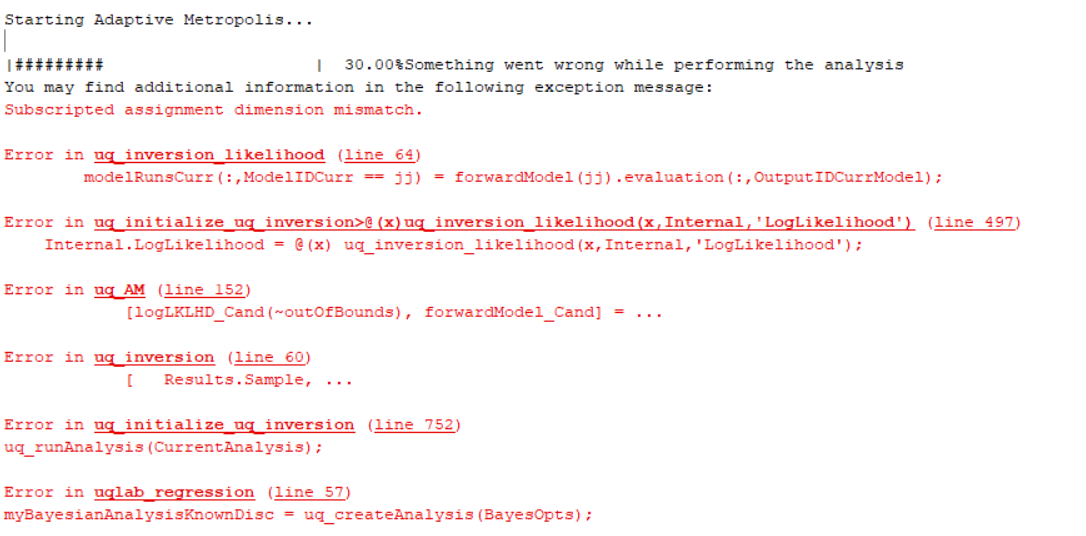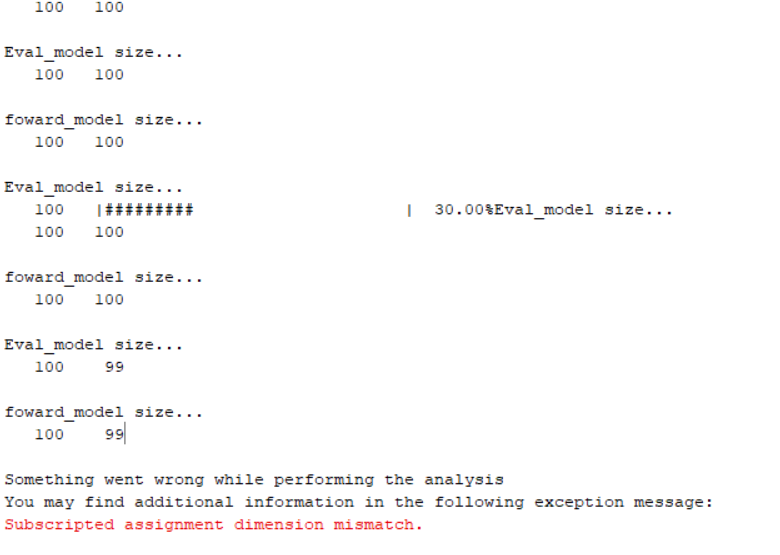Hi! I’m trying to implement Bayesian linear regression. Since the example given was kinda strange in terms of implementation I played around with the function handle in order to perform the inversion.
What I came up with is the following:
nsamples = 10;
N_cycles = log(linspace(1000, 1e7));
size_ = size(N_cycles);
a = -10;
b = 1000;
big_Array = ones(size_(2),2);
big_Array(:,1) = N_cycles;
modelOpts.mHandle = @(x) big_Array * transpose(x);
modelOpts.isVectorized=true;
foward_model = uq_createModel(modelOpts);
I’m trying to set up linear regression for the Baskin relationship for the fatigue analysis of a mechanical component.
The idea behind it is that I observe \sigma = [\sigma_1,...,\sigma_n]^t observations linearly related to N the amount of cycles to failure. Then I try to get the distributions for a,b the parameters of the model.
When trying to perform the inference, the sampling algorithm starts and after a certain amount of samples throws the following error:

Which is strange since it’s a shape error when the sampler already started. I believe the cause of this error to be in the settings I gave the sampler but I’m at a lost of what could it be.
Thanks in advance!
